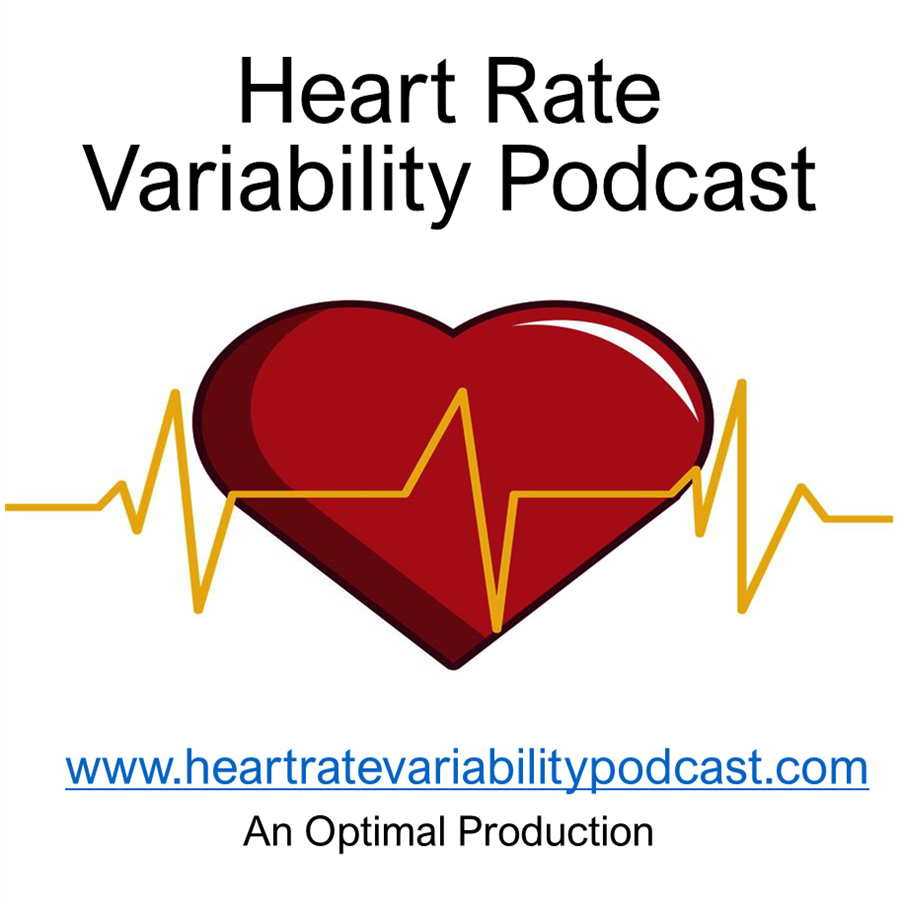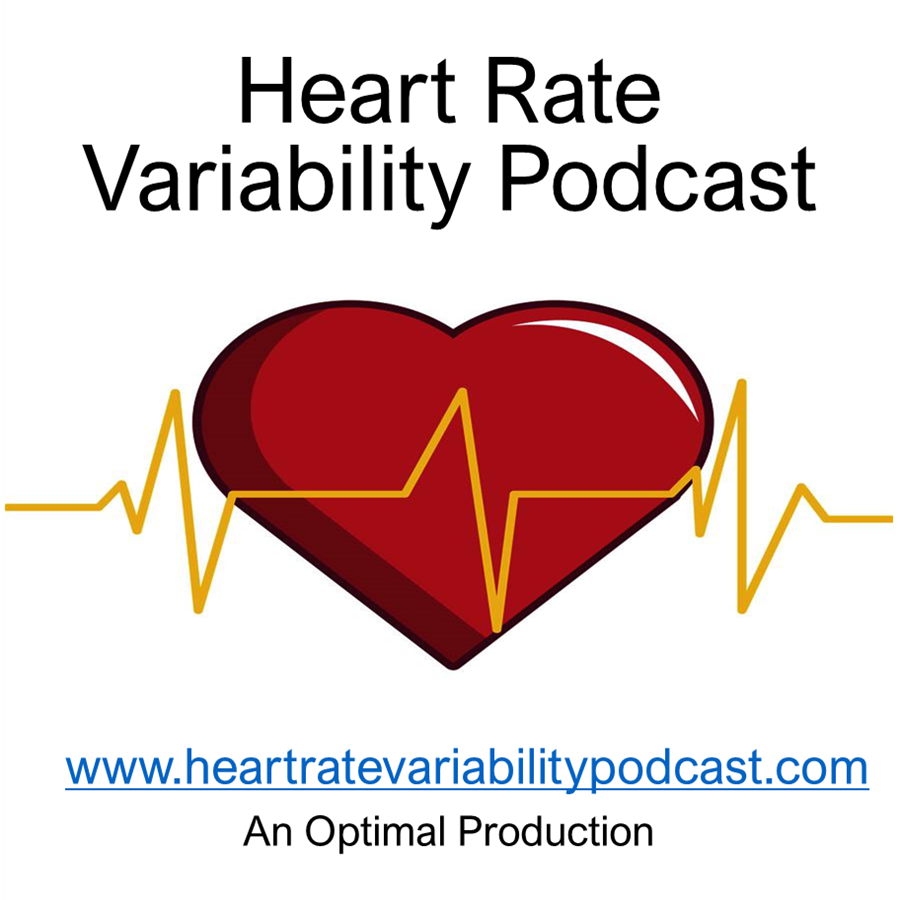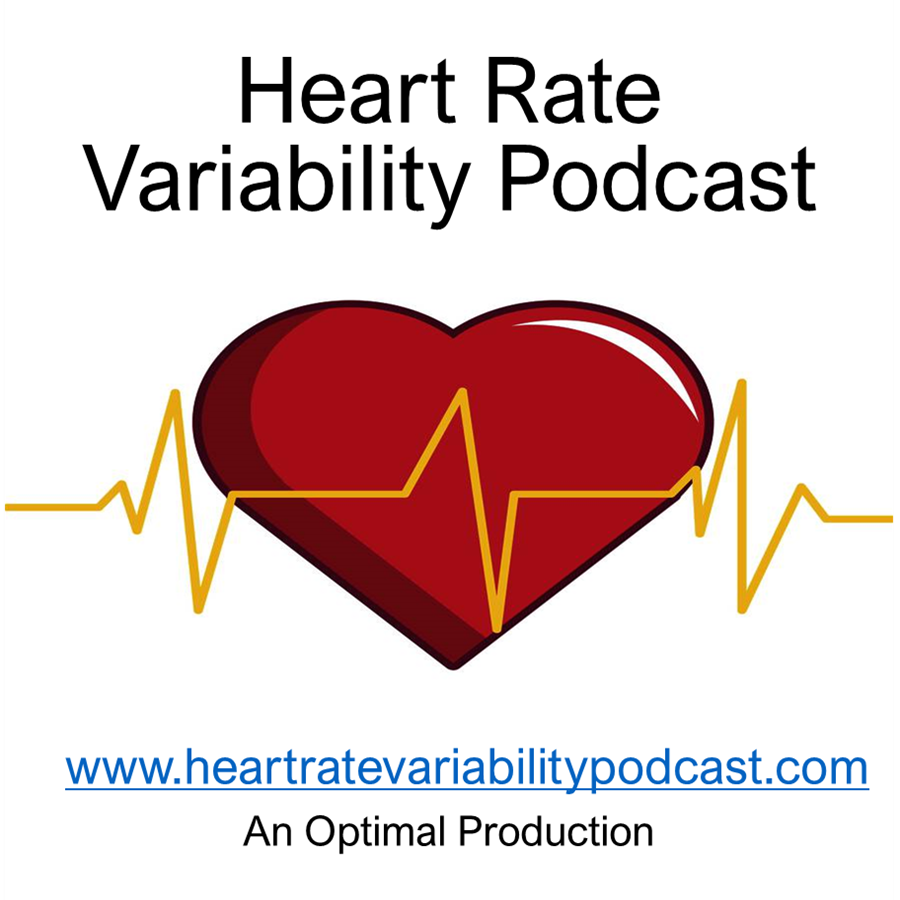Episode Transcript
[00:00:00] Welcome friends, to the Heart Rate Variability Podcast. This is the this Week in Heart Rate Variability edition, covering research and news from August 29th through September 4th, 2025.
[00:00:12] Each week we highlight the newest science, summarize what it means, and connect it back to resilience, recovery and well being.
[00:00:20] Whether you're a clinician, a researcher or someone curious about your own health, you'll leave with a better sense of how the rhythms of the heart tell the story of the nervous system. And this was a lighter publication week in terms of the number of new studies. But sometimes those weeks deliver a chance to slow down and focus more deeply. And that is the case here. We saw a new analysis from the ARIC cohort that extended HRV monitoring out to nearly two full weeks, a big step forward in understanding how autonomic tone tracks with lung health in real life. We also saw lab evidence that coping resources, what psychologists call a sense of coherence shape how HRV rises and falls across stress and recovery. That is a practical reminder that resilience is not just a resting number, it is a dynamic curve. And on the news front, ESC Congress 2025 wrapped up in London. Even if HRV was not in the headlines, wearables and remote monitoring were everywhere. The message was clear.
[00:01:25] Cardiology is moving steadily toward integrating continuous patient generated physiology into everyday care, and HRV style metrics are a part of that conversation.
[00:01:36] Let's dive in with the top study this week, the ARIC analysis on long term HRV and lung health. The Atherosclerosis Risk in Communities study, or aric, is one of the major US population cohorts that that has been running for decades. This paper by MacDonald et al, published in Respiratory Medicine on September 1, used continuous ECG monitoring over nearly two full weeks, about 14 days to derive heart rate variability measures. This duration exceeds both the five minute laboratory measurements and the regular daily morning baseline readings that are typically conducted. And here is what the researchers asked if we look at HRV stretched out over weeks, does it tell us anything about lung health? The answer was yes. Reduced multi day HRV was associated with lower spirometry values such as forced expiratory volume and increased risk of chronic lung disease. In other words, people with lower autonomic flexibility across two weeks tended to also have weaker lungs. Now, this does not prove cause and effect. It it could be that compromised lung function drives changes in hrv, or it could be that autonomic dysregulation contributes to lung decline.
[00:02:51] Most likely it's a two way street. But the key point is this HRV measured over long horizons at home can reflect respiratory health not just stress on a test day, not just how you slept last night, but deeper patterns that show up when you track continuously.
[00:03:09] This matters for several reasons. First, methodologically it shows that we can actually get stable HRV data over weeks of real world life. That is not trivial. Think about all the movement, artifact and variability people go through in daily life. Yet the researchers were able to extract meaningful HRV features sdnn, RMSSD and others from those long ECG traces.
[00:03:34] Second, it shifts the conversation about HRV from snapshot to trajectory.
[00:03:39] Most people in both clinical and personal context typically assess HRV briefly, either as a morning reading before and after sessions or as a daily average from a wearable this study suggests that there is value in trends across days and weeks, especially when we're thinking about chronic health conditions.
[00:03:59] And third, it expands the reach of HRV beyond stress and mental health into lung health. The autonomic and respiratory systems are closely linked.
[00:04:10] This study adds evidence that when the autonomic system is more flexible over time, the lungs are healthier too. This is an important insight for researchers, pulmonologists and remote monitoring protocol designers. Of course the limitations are important. This was a cross sectional analysis so we cannot say which came first, low HRV or poor lung function. Some disease history was self reported which always carries some noise and the abstract does not detail effect sizes yet. So we will want to see the full numbers before jumping to clinical cutoffs. But the methodological leap using two weeks of ECG to link HRV with lung outcomes is significant. So if you are a clinician, what is the takeaway? Do not expect to run two week ECGs on all your patients, but do start thinking in terms of longer horizons. Instead of focusing on a single reading. Watch how HRV trends across weeks, especially if you are working with chronic respiratory patients or with people recovering from illness.
[00:05:14] For researchers, this study opens the door to designing trials where HRV is a continuous real world biomarker, not just a lab metric. Let us move to the second top study this week which brings us into the lab, but tells a very practical story.
[00:05:29] Published in Physiology and Behavior, this research asked how do personal coping resources shape HRV responses during stress and recovery? The authors used a measure called sense of coherence or soc.
[00:05:42] This is a well validated psychological construct that captures how people view the world as comprehensible, manageable and meaningful.
[00:05:52] Higher SOC generally predicts better resilience and health outcomes.
[00:05:56] 30 healthy adult participants were recruited for this study and categorized into high and low groups.
[00:06:03] Everyone went through a stress a baseline, an anticipation phase, a psychosocial stressor, something like a speech prep or math challenge, and then a recovery period. HRV was monitored throughout all phases. Here's what they found. People with higher SOC showed more adaptive HRV dynamics and during the stressor they had clearer vagal withdrawal, the expected dip in HRV as the system mobilizes. And during recovery they showed a stronger rebound back toward baseline. By contrast, people with lower SOC had blunted curves. Their HRV did not drop as much during stress and did not rebound as well afterward. These findings highlight something critical. Resilience is not just about having a high resting hrv. It is about flexibility, the ability to dip when needed and then rise again. A flat line, even if it looks stable, is not adaptive if it means the system is not responding to challenges. For practitioners, this reinforces the idea of looking at phasic hrv, the shape of the curve across stress and recovery rather than only resting values. And for everyday listeners, it is a reminder that coping resources matter. Your perception of challenges and sense of control affect your physical health. How you make sense of challenges, how much you feel life is manageable actually shows up in your physiology. Now a quick sponsor break before we turn to the news. Today's episode is brought to you by Optimal hrv, the app and sensor built for accurate HRV training. Tim Ferriss, best selling author and host of the Tim Ferriss show in his 5 Bullet Friday spotlighted optimal HRV. Tim shared that he is training with the Optimal HRV app while experimenting with vagus nerve stimulation and hrv. When Tim puts something through its pace, people pay attention. Thanks Tim for the nod in five Bullet Friday.
[00:08:01] Now back to the Heart Rate Variability podcast. This week in HRV is brought to you by Optimal hrv. Our app was built to make all this science usable. One of the features we're most proud of is the Daily check in which pairs HRV readings with quick reflections on mood, sleep and energy over time. This creates a personalized map of how your nervous system adapts day by day. For therapists, it helps track client progress with context, not just numbers. For individuals, it provides insights into when to push forward and when to recover.
[00:08:36] If you haven't explored it yet, check out optimal HRV on iOS or Android. Alright, back to the news. The European Society of Cardiology Congress wrapped up this week.
[00:08:47] HRV was not the star of the program, but wearables and remote monitoring were everywhere.
[00:08:52] Session after session highlighted how continuous patient generated signals are shaping the future of cardiology the focus was on prevention, risk stratification and recovery tracking. For HRV watchers, the message is clear. Cardiology is normalizing variability based metrics in day to day pathways. But two points stood out. First, measurement context matters. Whether you're looking at nighttime averages, morning baselines or daytime fluctuations, the context changes interpretation.
[00:09:23] Second, the field is moving from one off numbers to longitudinal decision support.
[00:09:29] That means systems are expected to pull weeks of physiology and turn it into trends, patterns and actionable prompts, not just green or red scores. It's worth noting that most of the wearable discussion was about watches and rings that measure pulse rate variability. PRV through optical sensors PRV can diverge from ECG derived hrv, especially when signal quality is poor or depending on the metric.
[00:09:55] So we should not conflate the two. That does not mean wrist and ring devices are useless. They're incredibly powerful at scale, but we need to remember that they're estimating and to validate their outputs against ECG where possible.
[00:10:09] Let's wrap with two quick in case you missed it, items that are still fresh and relevant.
[00:10:14] First, a systematic review and meta analysis published Aug. 14 in Frontiers in Neurology, pulled together 11 randomized trials with 549 participants. The data demonstrate that acute sleep deprivation results in alterations in heart rate variability characterized by a reduction in RMSSD elevations in LF and the LF HF ratio and decreased vagal activity. This is useful because it quantifies what many of us see. Anecdotally poor sleep tilts the autonomic balance.
[00:10:48] If you see a short term HRV dip, ask about sleep before drawing bigger conclusions.
[00:10:53] Second, a terminology update from Nature Reviews Cardiology earlier this year. An international group now recommends replacing RSA with respiratory HRV or resphrv. They also caution against treating its amplitude as a pure proxy for vagal tone. That's a subtle but important shift. Cleaner language helps both in research papers and in educating clients and the public.
[00:11:18] So what is the big picture? This week the ARIC study shows us the power of long horizon HRV when we look beyond snapshots, HRV tracks with lung health, strengthening the case for continuous monitoring. The Coping Resources study shows that resilience is dynamic. It is not about a single number, but about how the curve bends across stress and recovery. ESC 2025 reminds us that that wearables are here to stay, but context and validation are critical. HRV style metrics are moving into mainstream cardiology, but interpretation has to keep pace with technology and the side notes on sleep and terminology remind us to be precise. Sleep debt matters for short term HRV and our language shapes how we communicate science.
[00:12:06] That's it for this week in hrv. Thanks for listening and thanks for the work you're doing. We're whether in clinics, labs or your own life to make this science meaningful.
[00:12:16] If you enjoyed the episode, share it with a friend or colleague and do not forget to subscribe so you never miss a week. I will be back next Tuesday with more of the latest science and news.
[00:12:27] Until then, take care and take a slow breath.


